Do you have a question about the Pioneer AVIC-X8610BS and is the answer not in the manual?
Provides an overview of the manual's structure and how to use it effectively.
Explains the typographical and symbolic conventions used throughout the manual for clarity.
Defines key terms and phrases used in the manual for consistent understanding.
Details regarding internal memory, including battery disconnection and microprocessor reset procedures.
Identifies and describes the various parts and buttons of the unit.
Explains how to remove and attach the detachable faceplate for theft deterrence.
Provides warnings and cautions for safe and proper use of the LCD panel.
Covers the procedures for inserting and ejecting discs and memory cards.
Describes the procedures for starting and terminating the system operation.
Guides through the initial setup process when using the product for the first time.
Explains how to navigate and switch between different screens using touch and hardware controls.
Details how to operate the product by touching the screen directly with fingers.
Explains how to access and use the navigation menu for routing and settings.
Details the information displayed on the map screen and how to interpret it.
Explains how the current vehicle position is displayed on the map screen.
Covers settings for lane information, junction views, and signposts for driving.
Explains how to change map scale, use Smart Zoom, and switch map views.
Step-by-step guide to finding a location by entering its address details.
How to search for facilities like gas stations, restaurants, and more using categories.
Instructions for selecting destinations from previously saved locations for quick access.
How to access and use the history and smart history features for recent searches.
Ways to alter the current route, including checking alternatives and setting a new start point.
Details on how to add, remove, or reorder destinations in the current route.
Instructions on how to create custom routes by adding multiple destinations.
Learn how to run a simulated navigation to preview the current route.
How to save favorite locations for quick access and reuse.
Instructions for saving frequently used routes for later retrieval.
Learn to save locations as alert points for warnings like school zones or railroad crossings.
How to enable and use the TMC receiver for real-time traffic reports.
Explains how to view traffic incident details directly on the map.
Accessing data like parking, fuel prices, traffic, weather, and GPS information.
Overview of how to configure navigation settings for optimal performance.
Guide to resetting all customizable settings back to their factory defaults.
Detailed explanation of various settings like Route Preferences, Sound, and Warnings.
Adjusting volume levels for master, voice guidance, and alert beeps.
Configuring speed warnings, alert points, and warning road signs.
Customizing map appearance, viewpoint, color modes, and display of landmarks/buildings.
Setting language, voice guidance language, and units for measurement.
Adjusting menu animations, themes, and display backlight.
Enabling or disabling TMC receiver and configuring traffic information settings.
Enabling online gas prices and selecting preferred gas types.
Managing trip logs, auto-saving, and track log saving for journey data.
Enabling or disabling connected online features and app integration.
Details on preparing devices for wireless Bluetooth connection.
Guide to registering devices for the first time, including searching for nearby devices.
Instructions on how to initiate pairing from the Bluetooth device itself.
Setting up automatic connection between the product and a Bluetooth device.
Procedure for removing a previously registered Bluetooth device.
Steps to manually connect to a registered Bluetooth device when needed.
How to enter the PIN code on your Bluetooth device to verify the connection.
Instructions on how to clear all Bluetooth device memory and settings.
Guide to updating the product's Bluetooth software for the latest features.
How to access the phone menu to manage calls and settings.
Description of touch panel keys used for operating the phone menu.
Explains various methods to make phone calls, including direct dialing and phone book.
How to search for contacts in the phone book using alphabet search.
Instructions for calling numbers from the recent calls history list.
How to register and dial numbers using preset speed dial lists.
How to answer or reject incoming calls, and record rejected calls.
Procedure to minimize the dial confirmation screen during a call.
Covers automatic call answering and switching ring tones.
How to change the order of contacts in the phone book (first/last name).
How to adjust the volume for the other party's voice for better sound quality.
Details on using voice recognition features, including Siri Eyes Free Mode.
Outlines the essential steps for connecting and setting up your device.
How to select the appropriate connection method for your device.
Lists the compatible iPod models and software versions supported by the product.
Details on compatibility and operation methods for Android devices.
Information on product compatibility with MirrorLink devices.
Details the settings, cables, and available sources for connecting various devices.
Explains the touch panel keys used for controlling radio operations.
Describes the indicators and information displayed on the radio screen.
Steps to access and start using the radio source.
How to switch between FM (FM1, FM2, FM3) and AM bands.
Procedure for manually tuning radio frequencies step-by-step.
How to scan for and tune into strong broadcast signals.
How to recall stored broadcast channels from memory using a single touch.
Instructions on how to store up to six broadcast channels using preset tuning keys.
Information on HD Radio features like high quality audio, multicasting, and data service.
Explains the touch panel keys for operating the HD Radio tuner.
Details the screen elements for HD Radio, including band, signal type, and album artwork.
Steps to display the AV source selection screen and start HD Radio.
How to switch between FM (FM1, FM2, FM3) and AM bands for HD Radio.
Procedure for manually tuning radio frequencies for HD Radio.
How to scan for strong signals for HD Radio reception.
How to recall stored HD Radio channels from memory.
Instructions for storing HD Radio channels using preset tuning keys.
Selecting how the system seeks stations from analog and digital broadcasts.
Setting to avoid frequent automatic switching between analog and digital signals.
How to store song information from broadcasts to an iPod.
Using hardware buttons like TRK for channel and seek tuning.
Explains touch panel keys for CD audio playback controls.
Explains touch panel keys for DVD/Video CD playback controls.
How to adjust the playback position using the time bar.
How to switch between music, video, or CD-DA file types on a disc.
Enables the Sound Retriever function to enhance compressed audio quality.
Describes the screen elements during CD audio playback.
Describes the screen elements during DVD/Video CD playback.
How to enable or disable random playback of tracks on a disc.
How to set repeat play for the current track or the entire disc.
How to select tracks to play from the disc's track title list.
How to switch between music, video, or CD-DA file types on a disc.
Using the search function to find specific parts like Title, Chapter, or Track.
How to operate the DVD menu using touch panel keys.
How to change the subtitle language for discs with multilingual data.
How to change the audio language for discs with multilingual audio.
How to move one frame at a time during paused playback.
Using the Bookmark function to resume playback from a selected scene.
How to use touch panel keys to select DVD menu items.
How to switch between viewing angles for multi-angle DVD recordings.
Explains the touch panel keys for controlling compressed audio file playback.
Describes screen elements for compressed audio playback, including file info and artwork.
Steps to start playing compressed audio files from a disc.
Steps to start playing compressed audio files from USB or SD storage.
How to switch between Folder Browse and Music Browse modes.
How to select files to play using the file name or folder name list.
How to enable or disable random playback of audio files.
How to set repeat play for current file, folder, or all compressed audio files.
How to switch between music, video, CD-DA, or photo file types.
Using TRK button for skipping files and fast forward/reverse.
Explains touch panel keys for controlling compressed video file playback.
Describes screen elements for compressed video playback, including file info and time.
Steps to start playing compressed video files from a disc.
Steps to start playing compressed video files from USB or SD storage.
How to select video files to play using the file name list.
How to set repeat play for video files, folders, or all files.
How to move one frame at a time during paused video playback.
How to slow down the playback speed of video files.
Explains touch panel keys for viewing still image files.
Describes screen elements for still image viewing.
Steps to start viewing still image files from USB or SD storage.
How to enable or disable random playback of still image files.
How to set repeat play for still image files, folders, or all files.
How to switch between music, video, or photo file types.
How to adjust the interval between images displayed in a slideshow.
Using TRK button for skipping files and searching.
Explains touch panel keys for iPod audio playback controls.
Explains touch panel keys for iPod video playback controls.
Describes screen elements during iPod audio playback.
Describes screen elements during iPod video playback.
How to shuffle songs, albums, or videos for random playback.
How to set repeat play for songs, albums, or videos.
Steps to connect and start using your iPod with the product.
How to search for songs or videos from the playlist screen.
How to control iPod functions directly from the connected iPod using App Mode.
How to adjust the playback speed for audiobooks.
How to view song lists related to the currently playing track via link search.
How to control iPhone/smartphone applications directly from the product's screen.
Steps to connect and start using iPhone or smartphone applications.
Instructions for connecting and using smartphones via Bluetooth or App Connectivity Kit.
How to use the on-screen keyboard for text input within applications.
How to adjust the image size for Android devices in AppRadio Mode.
How to display application images not compatible with AppRadio Mode.
How to display application images not compatible with AppRadio Mode for Lightning devices.
How to display application images not compatible with AppRadio Mode for smartphones.
How to connect and control MirrorLink devices and their applications.
Steps to connect and start using MirrorLink devices with the product.
How to output audio mixing AV source and iPhone/smartphone applications.
Information on requirements, limitations, and operations for the Pandora service.
Explains the touch panel keys for controlling the Pandora application.
Steps to connect and start using Pandora with iPhone or smartphone.
Steps to connect and start using Pandora with iPhone or smartphone.
How to display and select a Pandora station from the available list.
Instructions on how to create a new Pandora station.
Using TRK button to skip songs forward on Pandora.
Explains the touch panel keys for controlling Aha Radio content.
Describes screen elements for Aha Radio, including station name and content info.
Steps to connect and start using Aha Radio with iPhone or smartphone.
How to find the device number required for iDatalink Maestro module flashing.
Guide to updating the iDatalink Maestro module firmware.
Steps to start using iDatalink with USB/iPod or SiriusXM sources.
How to select preset channels from the list for SiriusXM tuner.
How to access vehicle's hands-free phone system via iDatalink adapter.
Explains touch panel keys for controlling a Bluetooth audio player.
Describes screen elements for Bluetooth audio playback, including file info and time.
Steps to connect and start using a Bluetooth audio player.
How to select tracks to play from the Bluetooth audio player's track list.
How to enable or disable random playback of audio files.
How to set repeat play for current file or all audio files.
Steps to subscribe to SiriusXM service and check Radio ID.
Explains the touch panel keys for operating the SiriusXM tuner.
Describes screen elements for SiriusXM, including band, station name, and album artwork.
Procedure for manually tuning SiriusXM channels.
How to recall stored SiriusXM channels from memory.
Instructions for storing up to six SiriusXM channels using preset tuning keys.
How to select a SiriusXM channel by entering the channel number.
How to select a SiriusXM channel from a list of all available channels.
How to select a SiriusXM channel from available categories.
How to pause, skip, fast reverse, fast forward, or replay the current channel.
Automatically start songs from the beginning when tuning to preset channels.
Hear a few seconds of songs from preset channels to find new music.
How to set parental controls to restrict access to inappropriate channels.
Procedure to lock specific SiriusXM channels to prevent access.
Get alerted when favorite songs, artists, or games are playing on other channels.
How to memorize song titles, artist names, and sports teams for alert lists.
How to store favorite sports teams to receive game alerts.
How to reset SiriusXM settings to their default values.
Using TRK button for channel selection and fast forward/reverse.
Explains touch panel keys for controlling HDMI source video output.
Describes screen elements for HDMI source, including time and date.
Steps to display and control video output from an HDMI source.
Explains touch panel keys for controlling AUX source video input.
Describes screen elements for AUX source, including time and date.
Steps to display and control video input from an AUX source.
How to set the video signal (Auto, PAL, NTSC, etc.) for AUX input.
How to switch between screens for operating music and video files.
Explains touch panel keys for controlling AV input.
Describes screen elements for AV input, including time and date.
Steps to display video image output from an AV source.
Steps to display image output from a connected video camera.
How to set the video signal (Auto, PAL, NTSC, etc.) for AV input.
Overview of MIXTRAX technology for creating non-stop music mixes with DJ effects.
How to specify an item (MIX pattern, tag list, file list) to play related songs.
How to select specific songs or items that should not be played.
How to specify the playback portion (middle, long, short) for songs.
How to change flashing colors based on sound and bass levels.
Setting whether to display guidance information on the AV operation screen.
Configuring automatic switching to the navigation screen from AV or AppRadio screens.
How to activate the Bluetooth audio source for using a Bluetooth audio player.
Setting whether recorded text information scrolls continuously or once.
Setting the video signal for external video equipment or cameras.
Information on the rear view camera function and its setup.
How to automatically switch to the rear view camera image.
Adjusting the polarity of the rear view camera image based on connected lead.
How to display camera views at all times.
How to display parking assist guidelines on the screen.
Procedure to adjust and set parking assist guidelines on the rear view image.
How to adjust touch panel key response positions for accurate touch input.
How to adjust brightness, contrast, color, hue, dimmer, and temperature for each source.
How to check the Bluetooth module's software version.
Steps to update the product's firmware using an SD memory card or USB device.
How to check sensor learning status for distance, turns, and speed pulses.
How to delete learned results stored for Distance, Speed Pulse, or Learning.
Verifying proper connection and position of leads for GPS antenna and positioning status.
Adjusting front/rear and left/right speaker balance for ideal listening.
Adjusting the balance between left and right sound output.
Automatically muting or attenuating AV source volume during navigation prompts.
Adjusting volume levels for each source to prevent radical changes between sources.
Making adjustments for reproduced frequency band and speaker characteristics.
Setting the frequency range for sound output from front and rear speakers.
Turning the subwoofer output mechanism on or off.
Selecting a listening position to optimize sound effects.
Making fine adjustments to speaker output levels by listening.
Correcting sound arrival time from each speaker to the listening position.
Automatically increasing volume level based on driving noise.
Adjusting equalization to match vehicle interior acoustics.
Adjusting equalizer curves and creating custom settings.
Setting auto-adjusted equalizer based on vehicle acoustics.
Detailed steps and precautions for performing Auto EQ measurement.
Selecting background displays from presets or importing from external devices.
Selecting preset illumination colors or creating custom colors.
How to select a theme color from available options.
How to select clock images for the AV operation and Top menu screens.
How to change the splash screen to other preinstalled images.
How to change the splash screen to images imported from external devices.
How to export Theme settings (Illumination, Splash Screen) to an SD card.
How to import Theme settings previously exported to an SD memory card.
Assigning priority languages for subtitle, audio, and menu in initial playback.
How to set a desired subtitle language for playback.
How to set the preferred audio language for playback.
How to set the preferred language for menus recorded on a disc.
Setting whether the angle icon appears on scenes where the angle can be switched.
Setting the display aspect ratio (16:9 or 4:3) for suitable rear display.
How to set parental lock levels to restrict access to certain scenes.
How to generate and display the DivX VOD registration code.
How to display the DivX VOD deregistration code.
Setting whether DVDs automatically start playback from the first chapter.
Selecting the suitable video signal setting for the rear view camera.
How to add a menu item to the Favorites screen for quick access.
How to remove a menu item from the Favorites screen.
How to change the date display format and the time format.
How to store song information to an iPod for direct purchase.
Transferring song information to iPod via USB.
Enhancing compressed audio and restoring rich sound.
Setting the screen size for video and JPEG images (Full, Zoom, Normal, Trimming).
Choosing to show the same image or a selected source on the rear display.
Setting a password to protect the product from unauthorized use.
Procedure to enter the current password to access the anti-theft settings.
How to delete the current password and password hint.
Instructions on what to do if the password is forgotten.
Methods to restore settings and content to default, including battery removal and reset button.
Lists common problems, their causes, and solutions for AV screen issues.
Specific issues related to AV screen functionality and their resolution.
| Screen Size | 6.2 inches |
|---|---|
| Resolution | 800 x 480 pixels |
| Bluetooth | Yes |
| Apple CarPlay | Yes |
| Android Auto | Yes |
| HD Radio | Yes |
| SiriusXM Ready | Yes |
| DVD Player | Yes |
| SD Card Slot | Yes |
| Backup Camera Input | Yes |
| AM/FM Tuner | Yes |
| Built-in Amplifier | Yes |
| Steering Wheel Control Compatible | Yes |
| Navigation | Built-in |
| USB Port | Yes |
| Preamp Outputs | 3 pairs |
| Audio Formats Supported | MP3, WMA, AAC |
| Video Formats Supported | DivX/MPEG-1, 2, 4/H.264/WMV |
| Power Output | 50W x 4 |
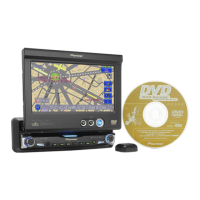
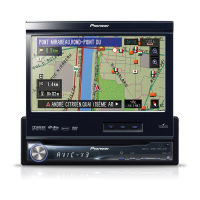
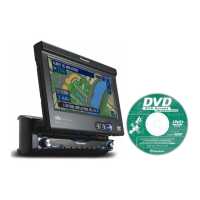

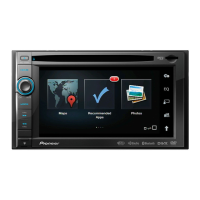
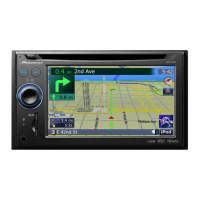
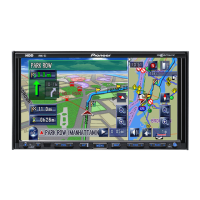
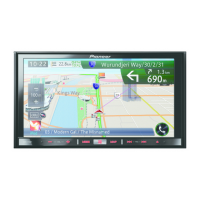



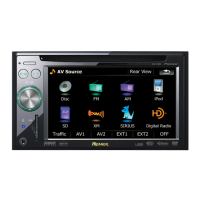
